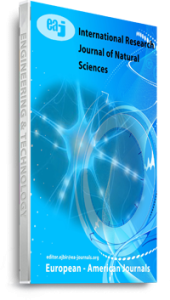Euphrates river is one of the most important rivers in Iraq. The monitoring and assessment of the water quality of this river spatially and temporally are a challenging problem. In this study, Artificial Neural Network model (ANN) model was used for prediction and forecasting the monthly Total Dissolved Solid (TDS) parameter in water. In the ANN model calibration, a computers program of multiple regressions (MLR) is used to obtain a set of coefficients for a linear model .Six sampling stations located along the Euphrates River were chosen. The period of study extended during 1999 and 2013.The input parameters of the ANN model were the flow rates of Euphrates River, the year, the month and the distance of the sampling stations from the upstream of the river. The results indicate that the discharge and distance had the most significant effect on the predicted TDS with a relative importance of (75 %) and (61%) respectively, followed by year and month with a relative importance of (33%) and (4%) respectively. The output was TDS of the water. The forecasting ability of these models is accessed on the basis of correlation coefficient, MAPE and RMSE. Using the connection weights and the threshold levels which obtained from ANN model, the equation of TDS concentration in p.p.m. for Euphrates river can accurately predict the TDS with a correlation coefficient, RMSE and MAPE were 0.928, 319.5 and 21.26% respectively. It is important in water quality management and finding the missing data. The concentration gradient of TDS of Euphrates river reaches between A-Qaim-Fallujah, Fallujah-Hindiyah, Hindiyah-Kufa and Kufa-Nassriyah were 0.0, 0.45, 3.0 and 10.0 p.p.m/Km. Comparison between final result of ANN and Multiple Regression Analysis showed the result in ANN models (RMSE and MAPE) values were less than them in multiple regression model which show higher accuracy of ANN model. So, ANN could explain the variability of the TDS of water in Euphrates river with more efficiency and outperform Statistical technique in forecasting. The advantages of using ANN model are to provide a new alternative to MLR and some other conventional statistical techniques which are often limited by strict assumptions of normality, linearity, variable independence, one pass approximation and dimensionality
Keywords: ANN, Distance, Euphrates River, MLR, Time and Discharge

